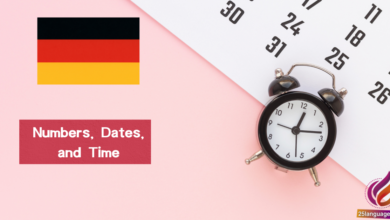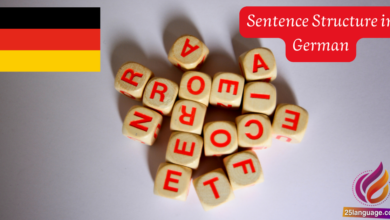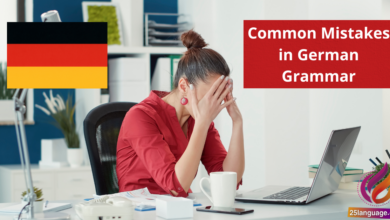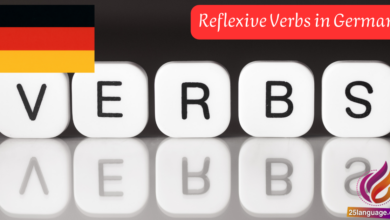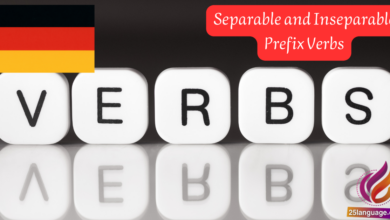How to Form the Plural of German Nouns

Mastering the plural forms of German nouns unlocks new levels of conversation and comprehension, making your language journey even more exciting! Unlike English, where you simply add an “s,” German takes you on a captivating exploration of endings, vowel changes, and even entirely new words. In this lesson, we’ll dive into the various ways to create plurals in German, equipping you with the tools to express yourself clearly and confidently in any situation. Let’s get started!
Mastering Plurals in German: Unlocking the Secrets of Noun Transformation
When learning to form plurals in German, it’s crucial to understand that there is no single method applied to all nouns. Instead, various rules and patterns dictate how nouns are transformed from singular to plural. For example, here are some common rules:
- For masculine nouns ending in -er, -en, or -el, the plural frequently enough simply adds an -n or -en. As a notable example, der Lehrer (the teacher) becomes die Lehrer (the teachers).
- Feminine nouns frequently enough add -n or -en, such as die Frau (the woman) transforming to die Frauen (the women).
- Neuter nouns can have varied endings: for example, das Kind (the child) becomes die Kinder (the children) without changing the main vowel or adding a suffix.
In addition to these patterns, there are also irregular plural forms which do not adhere to typical rules. it’s essential to memorize these as they can be quite different from their singular counterparts. For example,der Mann (the man) changes to die Männer (the men),while die Maus (the mouse) turns into die Mäuse (the mice). Below is a simple table summarizing some common noun transformations:
| German Singular | Plural Form | English Translation |
|---|---|---|
| der Lehrer | die Lehrer | the teacher |
| die Frau | die Frauen | the woman |
| das Kind | die Kinder | the child |
| der Mann | die Männer | the man |
| die Maus | die Mäuse | the mouse |
the Art of Pluralization: A Guide to Forming German Nouns
In German, forming the plural of nouns is an essential aspect of mastering the language. Unlike English, which typically adds an “s” or “es” to a singular noun to create its plural form, German nouns may change in various ways. Here are some general rules for pluralization in German:
- Adding -e: Many masculine and neuter nouns add -e in the plural.
- adding -n/-en: Nouns that end in -n or -e usually take -n or -en in the plural form.
- Adding -s: This is common for foreign nouns, especially those borrowed from English.
- Changing the vowel (Umlaut): some nouns will also require a vowel change along with the addition of a plural ending.
For example, the word der Lehrer (the teacher) becomes die Lehrer (the teachers) with the addition of no specific ending, while das Kind (the child) changes to die Kinder (the children) by adding -er. Another instance is die Blume (the flower), which turns into die Blumen (the flowers) by adding -n. It’s critically importent to remember the noun gender when forming plurals, as some endings are specific to masculine, feminine, or neuter nouns.
| German Singular | Plural Form | English Translation |
|---|---|---|
| der Stuhl | die Stühle | the chair / the chairs |
| die Katze | die Katzen | the cat / the cats |
| das Auto | die Autos | the car / the cars |
| der Apfel | die Äpfel | the apple / the apples |
Navigating German Noun Plurals: Techniques and Tips for Success
In German, forming plural nouns can be tricky because there are several different patterns, and not all nouns follow the same rules. Understanding the various plural formations is essential for English speakers learning the language. Here are some of the main rules to keep in mind:
- -e ending: Many masculine nouns form the plural by adding ‘-e.’ For example,der Lehrer (the teacher) becomes die lehrer (the teachers).
- -en ending: Feminine nouns often take ‘-en’ in the plural. As an example, die Frau (the woman) changes to die Frauen (the women).
- -n or -nen ending: Nouns ending in -e in the singular typically add -n or -nen. For example, die Freundin (the female freind) becomes die Freundinnen (the female friends).
- No change: Some nouns do not change in the plural. For instance, das Wasser (the water) remains die Wasser (the waters).
| German Noun | Plural Form | English Translation |
|---|---|---|
| der Apfel | die Äpfel | the apple / the apples |
| die Blume | die Blumen | the flower / the flowers |
| das Kind | die Kinder | the child / the children |
| der Tisch | die Tische | the table / the tables |
| der Stuhl | die Stühle | the chair / the chairs |
Building Your Vocabulary: Effective Strategies for Pluralizing German Nouns
In German, the pluralization of nouns can vary significantly based on the word’s gender and ending. There are several strategies to remember how to form plurals. A few common methods include:
- Adding -e: Many masculine nouns become plural by adding -e. For example, der Lehrer (the teacher) becomes die Lehrer (the teachers).
- Adding -n or -en: Feminine nouns frequently enough take -n or -en in the plural. As an example, die Frau (the woman) becomes die Frauen (the women).
- Adding -s: Some borrowed nouns, especially those from English, simply add -s in the plural form. For example, das Auto (the car) becomes die Autos (the cars).
| German Noun | Plural Form | English Translation |
|---|---|---|
| der Hund | die Hunde | the dog / the dogs |
| die Katze | die Katzen | the cat / the cats |
| das Buch | die Bücher | the book / the books |
| der Tisch | die Tische | the table / the tables |
It is also beneficial to memorize the noun’s plural forms alongside their singular counterparts as a method of reinforcement. Additionally, some nouns may undergo vowel changes in their plural forms, which is essential to note. Such as: der Apfel (the apple) changes to die Äpfel (the apples) where the ‘a’ changes to ‘ä’.Learning these patterns and rules will greatly assist you in expanding your vocabulary and mastering pluralization in German.
Closing Remarks
we’ve explored the fascinating world of plural noun formation in German! You’ve learned that while there are some rules to follow – like adding endings such as “-e,” “-en,” “-n,” or even changing the vowel in the stem – there are also many exceptions that make the language unique. Remember the importance of context, as some nouns can have irregular plural forms that you’ll need to memorize over time.
As you continue on your journey to mastering the German language, don’t hesitate to practice forming plurals in everyday conversation. Challenge yourself by reading German texts, listening to German music, or even labeling objects around you with their plural forms. The more you engage with the language, the more intuitive these rules will become.
Keep up the great work,and remember: learning a new language is a gradual process,full of small victories. Your dedication and practice will not only help you become proficient in German but will also open doors to new cultural experiences. Mach weiter so! (Keep it up!)
